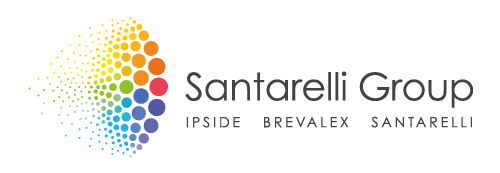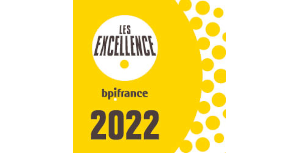What are the impacts of this reform on the protection of designs in the European Union?
The Directive (EU) 2024/2823 on the legal protection of designs and the new Regulation (EU) on European Designs No. 2024/2822 (the Amending Regulation on Community designs) of October 23, 2024, entered into force on December 8, 2024. Member States will have until December 9, 2027, to transpose this Directive into their national laws.
Regulation (EU) No. 2024/2822 will be applicable from May 1, 2025. Provisions requiring the adoption of secondary legislation will only apply from July 1, 2026, including new types of designs and digital designs.
As the first major reform of the design protection system in 20 years, it aims to offer creators and companies in the European Union enhanced protection better suited to current technological advancements. Tackling the shortcomings specific to the digital age, this reform also seeks to simplify, improve, and harmonize the registration procedure for designs in the European Union and strengthen the fight against counterfeiting.
This article will cover the main changes introduced by this reform, including terminological (1), financial (2), and practical (3) changes, as well as modifications regarding the expansion (4) and limitation of rights (5).
1. New Name - New Definition - New Symbol:
The terminology of Community designs (CD) is changing and will now be referred to as "European Union Designs - EUD" for registered designs and "UEUD" for unregistered European Union designs.
The definitions of "designs" and "product" have been broadened and adapted to encompass a wider range of designs, taking into account recent technological advancements, particularly in the field of animation.
Thus, "designs" now refer to "movement, transitions, or any other type of animation" while the concept of "product" has been extended to include non-physical items presented in digital form, such as graphical user interfaces and virtual models protected in the metaverse.
These changes in definitions, which expand the scope of design protection, also have an impact on the representation criteria of designs, a topic addressed later in the section on the practical changes of the reform.
Additionally, the new Regulation introduces a new symbol, the letter D surrounded by a circle Ⓓ. This symbol will allow the owner of a design, similar to the ® symbol for registered trademarks and © for copyright, to inform third parties that their design is registered and protected, thereby deterring unauthorized reproduction. (Tip: This symbol can be displayed in Word by typing: Alt + 9401 while holding down the ALT key.)
2. Significant Financial Changes
Starting May 1, 2025, a substantial increase in renewal fees for Community designs (soon to be called European Union designs - EUD) will take effect:
- 1st renewal: €150 (currently €90)
- 2nd renewal: €250 (currently €120)
- 3rd renewal: €400 (currently €150)
- 4th renewal: €700 (currently €180)
It is strongly advised to renew designs whose six-month renewal window expires at the end of September 2025 before May 1, 2025, to avoid a significant increase in renewal costs.
The EUIPO has confirmed that the date of receipt of the renewal application will be the reference date for calculating renewal fees. For applications submitted before 1 May 2025, the fees in force until then will continue to apply. However, for applications received after this date, the new renewal fees will come into effect.
This increase will inevitably have an impact on the strategy for maintaining designs, and will undoubtedly encourage their owners to renew only those designs that are actually used on the market, justifying the maintenance of protection, in order to reduce the costs incurred.
- Increase in the filing fee: the design filing fee and the publication fee will be merged into a single filing fee paid at the time of filing.
This merger will automatically lead to an increase in initial filing costs and will have a particular impact on certain sectors of activity such as fashion, which often use design filings to protect their collections, and which do not necessarily request publication of all their designs. - The fee for deferring publication has been maintained. Filing an EUD with deferment will therefore be more expensive, since the filing and publication fees have been merged into a single fee, to which the deferment fee will be added.
- Multiple design: a reduced flat fee of €125 will apply for each additional design included in a multiple application.
On the other hand, the decreasing fee applicable per additional design beyond a certain number of designs in a multiple application has been removed. This removal of the decreasing fee will have an impact on companies that used to file a large number of designs in their multiple applications. - The fee for recording the transfer of ownership or cancelling the recording of a licence in respect of EUD has been removed.
It is worth noting that, for now, no increase in fees is planned for the filing or renewal of a European Union designation within an international design.
Depending on the circumstances, particularly in the case of multiple designs, it may prove more financially advantageous to use the international design system (WIPO).
3. Practical Changes:
In respect to filing procedure for Designs:
- End of the Single Class Requirement: Designs from different classes of the Locarno Classification can now be included in a single application, reducing the number of applications and associated filing costs. For example, handbags and clothing used to be filed in two separate applications, but can now be filed in a single application.
On the other hand, the number of designs is now limited to 50 per application. - New Representation of Designs: Due to technological advances, new representation methods have been introduced to allow all types of designs to be represented, including digital ones.
Reproduction can be static, dynamic, or animated and may be created using video, computer imaging, or modeling.
The number of representations is also no longer limited to 7 views for filing in the European Union, which will make it easier to reproduce all the features of the registered design, including complex designs.
On the other hand, the presentation of physical specimens has been abolished.
The main requirement for acceptability is that the representation of the design must be sufficiently clear to identify the subject matter for which protection is sought.
Additionally, a condition of protection has also been introduced in the regulations: the criterion of visibility. Protection applies to the characteristics of the appearance of a EUD that are visibly represented in the application for registration. - Deferment of publication: the waving of a deferment of publication is no longer subject to the payment of a publication fee. This means that an EU design for which deferment has been requested will automatically be published at the end of the 30-month period, unless the holder expressly waives publication.
Publication of the design at the end of the deferment period therefore becomes the rule. If the owner does not wish to have his design published, he must expressly renounce publication in order to avoid any disclosure to the public. Design owners should therefore be vigilant on this point to avoid a design that is supposed to remain secret being published and disclosed to the public at the end of the deferment period.
Concerning the renewal procedure:
- Change in the renewal deadline for designs:
Through this reform, the EUIPO is aligning the design renewal process with the European Union's trademark regulations.
Under the new Regulation, the basic renewal period will now be the six-month period ending on the expiry date of the registration, rather than the last day of the month in which protection ends.
To avoid any loss of rights, design portfolios should therefore be updated in line with this new rule.
4. Expansion of Design Rights
This reform of the Designs Package also strengthens the scope of design protection by extending the rights conferred by designs in the European Union and the infringements to which they are subject:
- 3D printing:
The exclusive rights conferred by a design have been extended to 3D printing. The creation, downloading, copying, sharing or distribution to third parties of any media or software that registers the design in order to manufacture a product that incorporates the design or to which it is applied constitutes unlawful use of a design. - Products in transit within the European Union:
To better combat the counterfeiting, the holder of a registered EU design may, if he has not given his authorisation, prohibit any third party from introducing into the European Union products in transit (or under other customs procedures) from third countries which incorporate the registered design or to which the design is identically applied, or where the design is indistinguishable in its essential aspects from such products.
Thus, counterfeit products in transit or transhipped through the territory of the European Union or the Member State concerned may be subject to customs detention. This right lapses, however, when the holder of the products proves that their commercialisation is lawful in the final destination country. - Administrative Procedure for Invalidity:
Like the reform of "Trademark Package", this reform introduces the possibility for Member States to introduce an administrative procedure allowing for the invalidation of registered designs without requiring judicial proceedings.
This faster and less costly administrative procedure should make it easier for holders of registered designs to request the invalidation of subsequent designs that infringe their rights.
5. Limitations on Design Rights in the European Union
The new Regulation introduces two new limitations to EU design rights:
These are acts carried out:
- to identify a product or refer to a product as being that of the holder of the design right. This should facilitate interoperability between different products.
- for the purposes of comment, parody or criticism in order to guarantee freedom of speech.
Design owners cannot prohibit these acts on the basis of their rights, provided that they are:
- compatible with fair trade practices, and
- they do not harm the normal exploitation of the design.
Repair Clause:
To harmonize spare parts protection within the internal market, a "repair clause" has been introduced, allowing the reproduction of designs for the sole purpose of repairing complex products to restore their original appearance.
This exception applies only to spare parts whose appearance is dictated by the shape of the product and must be used exclusively for repair purposes.
A transition period until December 9, 2032, is provided for spare parts designs registered before December 8, 2024, ensuring continued protection until the end of this period.
This highly anticipated reform of European Union designs aims to balance innovation, competitiveness, and harmonization in an evolving digital landscape while strengthening intellectual property rights protection within the European single market.
Legal professionals will need to adapt to these changes to maximize the opportunities they present. However, some uncertainties remain, particularly regarding the compatibility of certain changes with foreign laws outside the EU, such as dynamic/animated representations in international design protection and their use in infringement or invalidity cases.
Further adjustments in design protection are likely to be necessary in the near future.
Our team of legal experts and Trademark and Design Attorneys is here to assist you with these changes and help redefine the most appropriate strategies under the new regulatory framework.













